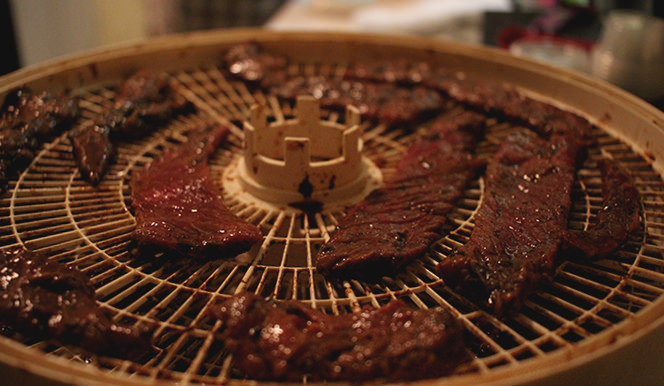Dehydrators are very common among survivalists, and for good reason: you can use them to make your own dehydrated food at a fraction of the cost of regular dehydrated food. But it can be a bit intimidating getting started and choosing which foods to dehydrate and how to use it in the most cost-effective way possible. What foods to dehydrate and which methods to use will vary from case to case, depending on your energy costs, dehydrator capacity and model, and food prices in your local area. Here is a brief discussion on some of the considerations when choosing what foods to dehydrate.
To illustrate the factors involved in deciding what to dehydrate, let’s consider two of the most common survival foods: rice and beans. These are popular items to dehydrate, because they’re cheap and provide excellent sources of protein and complex carbohydrates. However, they need to be cooked before you can dehydrate them. This can add to the cost of the finished product if your electricity or gas prices are high. However, in order to dehydrate rice and beans, they will not require too much energy to reheat and will be light and easy to transport.
Rice and beans both have incredibly long shelf lives uncooked, so if you plan to stay put when SHTF, it might be more cost-effective to store them as they are dehydrate them. However uncooked, they will use more energy to prepare in the long run, so factor in your intended cooking method as well. This decision between cooking, dehydrating and then rehydrating vs. storing uncooked and cooking like normal can be applied to other dried grains as well.
There are of course many food products that dehydrating will preserve for much longer than any other method, particularly meat and eggs. While meat can certainly be costly to buy enough of to make a good batch of jerky, it is hands-down the best method to preserve meat, and very simple.
Produce, on the other hand, can be stored in a number of other ways that you will want to compare to dehydrating, such as pickling, lacto-fermenting, preserving in oil or canning. All these methods may use less energy than dehydrating but preserving in oil, for instance, will add to the cost because you will need a considerable amount of oil. Dehydrating has a unique advantage over all the rest of these methods, however, because it makes whatever you preserve so light and compact.
These are just a few factors to consider when planning out the use of your dehydrator. There are many ways to use it and the best option will depend on you. But do some research, experiment, and soon enough you’ll be efficiently building your own survival stash!
If you liked that, you might also like:
Learn How To SUPER-CHARGE your garden or farm…
Click Here To Get The Best Survival Medical Course…
Check Out These Mind Blowing Survival Skills…


